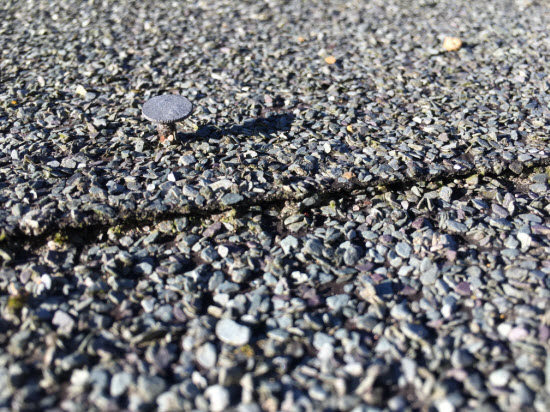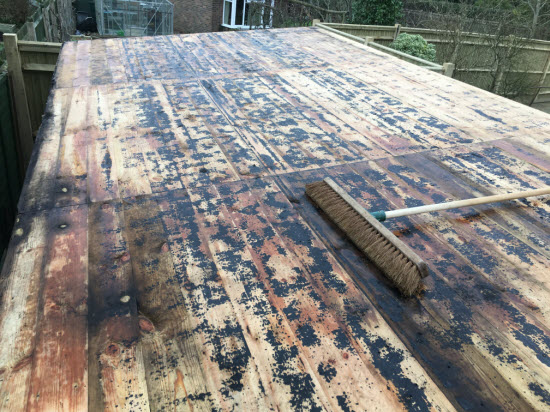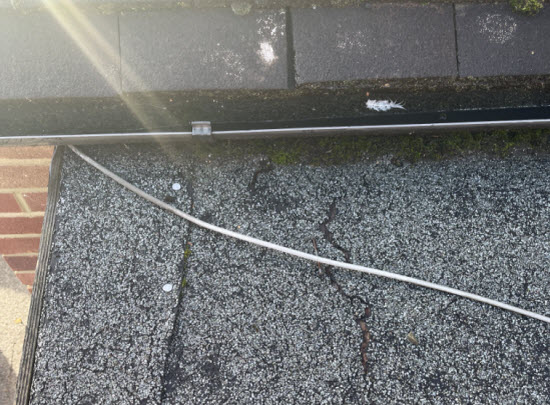What 100 Shed Roofs Taught Me About Why Felt Always Fails
I've stripped felt off a lot of shed roofs in my time. But I'll never forget the one that made it painfully clear just how flawed shed felt really is. It was a crisp autumn morning, and the homeowner had called me out because her garden tools were wet-even though the felt roof looked, to her, perfectly intact.
As I peeled back the felt, the answer was obvious. Water-stained roof deck, blackened streaks at the corners, and rust around the nails. It was textbook-and yet, completely invisible from the outside.
And so began my personal vendetta against cheap shed felt.
Why Shed Roof Felt Leaks (Even When It Looks Fine)
You wouldn't expect a roof covering to fail in just a few years, especially one designed specifically for sheds. But traditional roofing felt has three major weaknesses-and if you're dealing with leaks, it's almost certainly due to one (or all) of these.
-
Nail Holes: Small Punctures, Big Problems
Every strip of roofing felt is typically nailed into place along the edges and overlaps. In theory, the bitumen content seals around each nail. In practice, bitumen ages.
Over time, sunlight and weathering make the bitumen dry and brittle. Those neat nail holes start to crack and widen. Water finds its way in, and capillary action does the rest. Sometimes the nail even pops up, creating an even easier access point.
And guess where the roof deck starts to rot first? You guessed it-right around the nails.
-
Lap Joints That Let Water Sneak In
Felt comes in 1-metre-wide rolls. To cover a wider shed roof, you lay strip after strip, overlapping by 50mm or more. The problem is that most people (even shed manufacturers) don't seal these overlaps properly.
Without a bitumen-based adhesive or heat welding, wind-driven rain or capillary action can sneak between the sheets. This is especially common on shallow-sloped pent roofs, which often have a slope of less than 6 degrees-below the manufacturer's recommendation.
-
Bitumen Breakdown from UV Light
The final nail in the coffin? Time.
The top surface of felt is covered in mineral chips to protect it from the sun, but eventually these weather off-especially at the edges, corners, and folds. Once the black felt is exposed, UV radiation starts to harden and crack the material.
Stress points like corners, overlaps, and nail penetrations are the first to go. Eventually, even the tiniest crack becomes a water ingress point. And the inside of your shed starts to feel damp, musty, or worse-starts to rot.
 This roof nail had been literally forced out of the roof deck over time by expansion and contraction of the roof materials. It provided a perfect hole in the shed felt for
water to leak through.
This roof nail had been literally forced out of the roof deck over time by expansion and contraction of the roof materials. It provided a perfect hole in the shed felt for
water to leak through.
 A Pent shed roof deck, after I removed the shed felt covering. You can see clearly dark lines where the lap joints in the felt had been letting water in over a long period
A Pent shed roof deck, after I removed the shed felt covering. You can see clearly dark lines where the lap joints in the felt had been letting water in over a long period
 This is quite a large crack in the shed felt. The felt became brittle due to UV and rather than 'give' a little, it gave up!
This is quite a large crack in the shed felt. The felt became brittle due to UV and rather than 'give' a little, it gave up!
Shed Felt's Reputation Is Better Than Its Reality
The reason shed felt is still widely used? Branding. The word shed felt makes it sound like it's meant for the job.
It's cheap. It's easy to roll out. And from the outside, it often looks just fine. But the truth is that shed felt has the shortest lifespan of any shed roofing option-and if you're on your second or third re-roof in ten years, you already know that.
Yet manufacturers continue to supply it as the standard option. Why? Because it's the lowest-cost solution that keeps their advertised prices down.
The real cost comes later.
There's a Better Way to Do Shed Roof Repair
I'm not just here to moan. Here's what I recommend to customers who are sick of shed roof leaks:
Explore Modern Alternatives
- EPDM rubber is my go-to recommendation. One-piece membrane, no lap joints, no exposed nails.
- Corrugated sheets (metal or bitumen-based) are long-lasting, though less attractive.
Get the Slope Right
- For felt or other roll-based materials, ensure the slope is at least 10 degrees.
- On flat or shallow roofs, avoid using felt entirely.
Upgrade When You Replace
- If your shed is due for a new roof, consider adding an 11mm oriented strand board (OSB) over-board to improve fixings and support.
- EPDM uses no nails (it's glued to the roof deck), is cut to the size of the roof (so no lap joints)and doesn't degrade in uv light.
Stay Vigilant
- Once a year, brush off leaves and debris.
- Inspect corners, overlaps, and nail lines after storms.
Who This Advice Is For
If you own a timber shed and want to stop wasting time and money on repeat roof repairs, this article is for you. Maybe you've done the felt yourself before. Maybe you paid someone to do it. Either way, if you're facing leaks again-you're not alone.
Back to the Shed I Stripped That Day
After removing the old felt and repairing the roof deck, I re-covered the roof with a single-piece EPDM membrane. Five years later, I checked in with the owner-still bone dry. No moss. No cracks. No maintenance.
Shed felt can work, but only if the conditions are perfect and you redo it every few years. If you're tired of playing shed roof roulette, maybe it's time to consider the smarter option.
One that actually lives up to its name.

Keep in touch with our monthly newsletter
Shed Building Monthly




